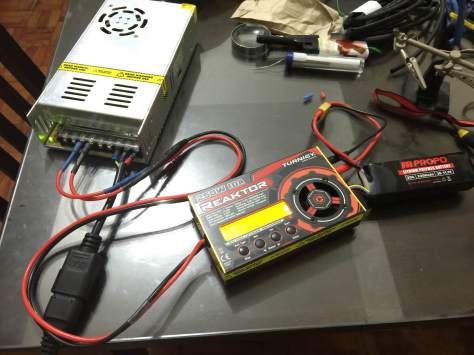If you’re reading this and just started with the hobby, let me give you a piece of advice to save your LiPos and hard-earned money:
- Get a good balancer charger and
- Do not charge each LiPO cell to the max of 4.2v, charge instead at 4.1v or 4.15v. This will make the lipos last longer — as much as twice the cycles/lifespan.
I’ve had this generic B6AC+ 80watt AC/DC charger for a little over 3 years now, my first one in fact and its seems to work ok, but I noticed that a big percentage of my lipos are puffing up. At first I attributed this to my usage, but with mainly planes used for FPV and not being an aggressive flyer at all, I found this strange.

Fast forward recently and with about 25 Lipos of varying cell counts and capacities, half of them have puffed, somethings not right! I can’t be the most stupid RC flyer out there!
What really convinced me was when I bought a 3S 2200mah JRPropo battery. After a couple of cycles, the 3rd cell is always 10% higher in charge and often exceeds 4.2v when trying to charge. No matter how often I discharge and how long I charge it (balanced of course), the first 2 cells can not get the 4.2v full charge. Checking the battery with a fellow flyer’s Powerlab 8 v2 showed that the 3rd cell has twice the resistance as the first 2, however unlike my charger the cellpro is trickling charge into the first 2 cells attempting to catch up with the 3rd. I didn’t complete it though as I had to leave the field.
So bottom line, the charger had to go. But what to choose? the Powerlab 8? iCharger? Reaktors? I eventually decided to get the Turnigy Reaktor 250w 10A from HK. It’s cheap (< US$50), full featured (it being a copy of the iCharger 106B+) and looks really cool too. Fortunately, I also found a local supplier of a good power supply (360w) for it:

So the verdict? this small charger did a lazarus on my LiPO above! after setting the termination voltage at 4.15v (I can’t do this with my old charger). I proceeded to do balanced charging.
The image below shows the charging several minutes after I started. This shows cells 1 and 2 catching up to cell 3, which was pared down to 4.15 (it was registering 4.21v at the beginning) by the charger and maintained at that charge all throughout the charging cycle.

An hour later, I got fully balanced battery charged at 4.15v each cell!

I’m beginning to really like this charger.. here’s the balanced cells.

So if you’re thinking of getting a 2-6s charger, this small charger is very capable. Full-featured, adequate power to handle high C charging and best of all, cheap!










